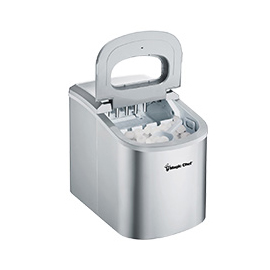Understanding HPMC Cellulose Properties, Applications, and Benefits
Hydroxypropyl Methylcellulose (HPMC) is a semisynthetic polymer derived from cellulose, a natural polysaccharide. As a derivative of cellulose, HPMC offers a unique blend of functional properties that make it a versatile ingredient across various industries. This article delves into the characteristics, applications, and benefits of HPMC cellulose, highlighting its importance in modern formulations.
Properties of HPMC
HPMC is a white or off-white powder soluble in cold water, forming a viscous solution. Its molecular structure consists of a cellulose backbone substituted with hydroxypropyl and methyl groups. These modifications enhance the compound's solubility, thickening, and film-forming properties. Importantly, HPMC is non-toxic, biodegradable, and gel-forming, making it an excellent candidate for various applications.
One of the standout features of HPMC is its thermal stability. It remains stable across a wide range of temperatures, which is crucial in applications where heat-sensitive components are involved. Additionally, it exhibits shear-thinning properties, meaning its viscosity decreases under shear stress. This is particularly beneficial in manufacturing processes, as it allows for easier mixing and application without compromising the final product's quality.
Applications of HPMC
HPMC is used in a multitude of industries, including pharmaceuticals, food, cosmetics, and construction, due to its adaptable properties.
1. Pharmaceuticals In the pharmaceutical industry, HPMC serves multiple roles. It is commonly used as a binder in tablet formulations, providing cohesion to the ingredients. Additionally, HPMC acts as a controlled-release agent, allowing for the gradual release of active ingredients, thereby enhancing therapeutic efficacy. Its role as a suspending agent in liquid formulations stabilizes compounds that would otherwise settle out of solution.
hpmc selulosa

2. Food Industry The food industry benefits significantly from HPMC's thickening and emulsifying properties. It is often included in various food products, such as sauces and dressings, to improve texture and viscosity. Furthermore, HPMC acts as a fat replacer, contributing to a creamy mouthfeel while reducing calorie content, making it an ideal ingredient for healthier formulations.
3. Cosmetics and Personal Care HPMC is widely used in the cosmetics industry as a thickener and emulsifier, stabilizing formulations such as lotions, creams, and gels. Its film-forming ability provides a smooth application, enhancing the sensory experience. Furthermore, HPMC is non-irritating, making it safe for use in sensitive skin formulations.
4. Construction In construction materials, HPMC functions as a key additive in cement-based products like tile adhesives and mortar. It enhances workability, water retention, and adhesion properties, thereby improving the performance of these materials. HPMC's water-retaining ability ensures that the mixture maintains moisture, promoting a longer working time and better final performance.
Benefits of HPMC
HPMC offers several benefits that make it a preferred choice in various applications. Its non-toxic nature and safety profile allow for widespread use in food and pharmaceutical products, aligning with consumer demands for safer, cleaner ingredients. Moreover, the versatility of HPMC means it can be tailored to meet specific functional requirements, providing manufacturers with a customizable solution.
The ability to adjust the viscosity and gel strength based on the concentration of HPMC used ensures it can be adapted for different formulations without compromising quality. Additionally, its environmentally friendly nature contributes to the growing trend towards sustainability in manufacturing.
Conclusion
In summary, Hydroxypropyl Methylcellulose (HPMC) is a vital ingredient with diverse applications across various industries. Its unique properties, such as solubility, thickening ability, and thermal stability, contribute to its effectiveness in pharmaceuticals, food, cosmetics, and construction. The benefits of using HPMC—including its safety, versatility, and customization options—make it a valuable component in modern formulations. As industries continue to evolve and seek innovative, sustainable ingredients, HPMC is poised to play an even larger role in the future.
-
Rdp Powder: Key Considerations for Wholesalers in the Building Materials IndustryNewsJul.08,2025
-
Key Considerations for Wholesalers: Navigating the World of Hpmc - Based ProductsNewsJul.08,2025
-
Hpmc Detergent: Key Considerations for WholesalersNewsJul.08,2025
-
Key Considerations for Wholesalers: China Hpmc For Tile Adhesive, Coating Additives, Concrete Additives, and MoreNewsJul.08,2025
-
Crucial Considerations for Wholesalers: Navigating the World of Construction MaterialsNewsJul.08,2025
-
Key Considerations for Wholesalers Sourcing Additive For Cement, Additive For Concrete, Additive For Putty from Additive Manufacturer Shijiazhuang Gaocheng District Yongfeng Cellulose Co., Ltd.NewsJul.08,2025




